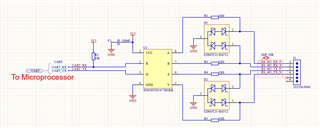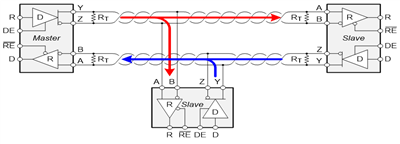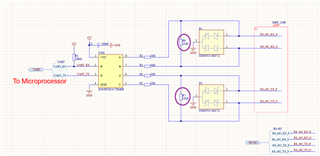Other Parts Discussed in Thread: AM6422,
Tool/software:
Hi,
We would like to use RS-485 transceiver, SN65HVD1477DGKR along with a microprocessor (similar to TI's AM6422) to implement full-duplex transceiver in one of our products.
Could you please review the schematics of the RS-485 shown below?

Could you pleas confirm the 30 ohm differential impedance?
Thank you.
Regards,
Kavin



